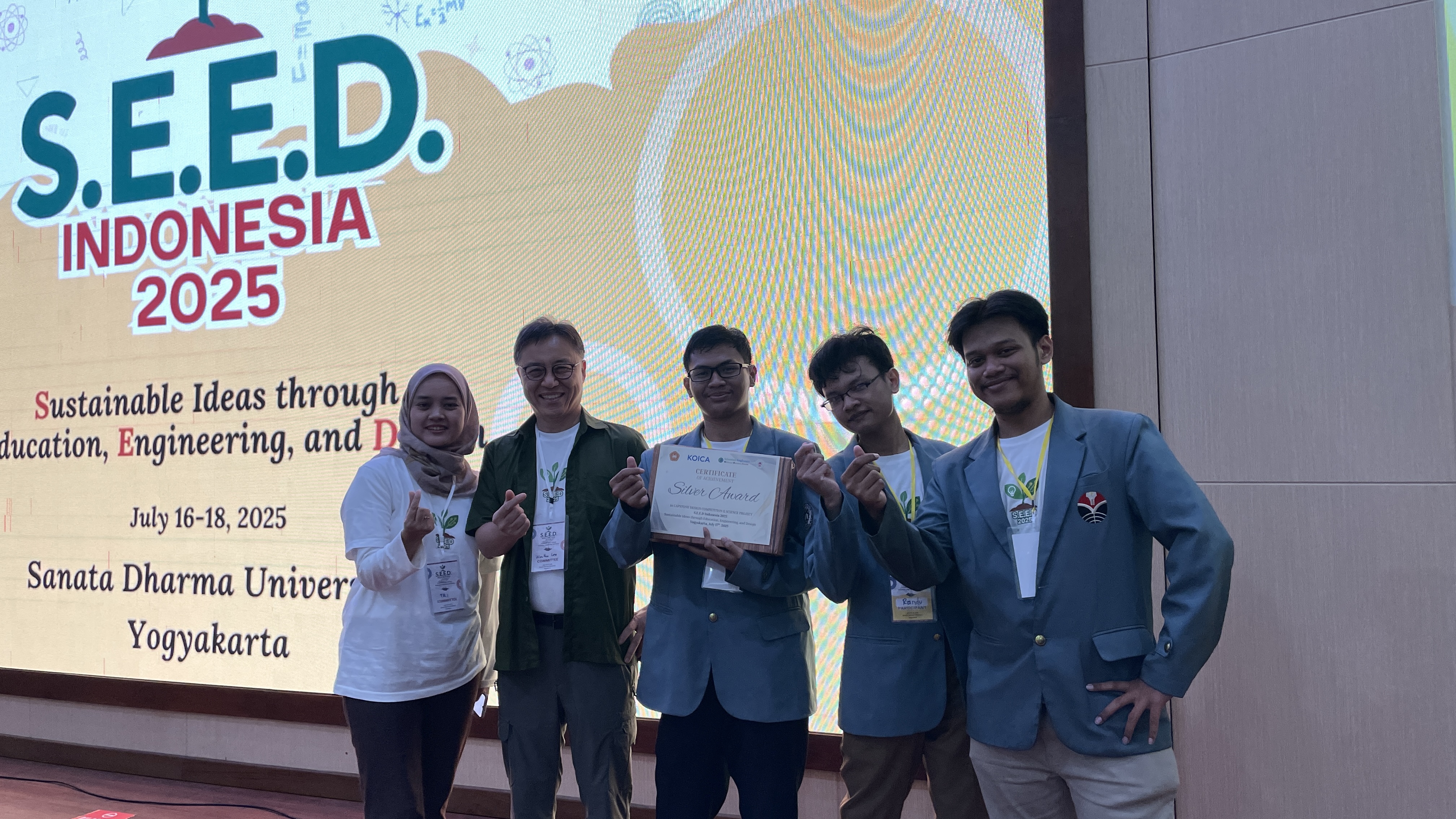LUMINOLYTIC is derived from the words “luminous” and “analytic”. Luminous is a Latin word that means “light” and “analytic” is an act of examining something, so LUMINOLYTIC is a project where we develop an instrument that uses light to measure or examine things. One of the ways to do this is by spectrophotometer that can measure absorbance from a substance by passing it with light. Our team consists of 3 members that is Ali Akbar Arrantissi as our group leader, Randu Cahya Putra and Noor Muhammad Al Ghifari as group members. Guided by Mrs. Triannisa Rahmawati, S.Pd., M.Si., and Mrs. Qonita Mu’minah, S.Pd., M.Si., we aim to develop low-cost spectrophotometer instruments and yet has an accuracy that can compete with standard spectrophotometer in the laboratory.
Our project starts from one of the courses that we took in the last semester. In this course we thought about what item we should develop that can be used for practical purposes. After doing our research, we found that many high and vocational schools lack UV-Vis spectrophotometer instruments even though being able to operate the instrument is one of the learning achievements. Low-cost UV-Vis Spectrophotometer will also be helpful for conducting field research that require ready-to-use instrument. Therefore we began to develop our first LUMINOLYTIC project, that is Mini-Vis: Low-Cost Single Beam Spectrophotometer. This first prototype became our fundamental for understanding the basic principle of UV-Vis spectrophotometer, Arduino microcontroller, and designing 3D models.
This first project was made in the Fabrication Laboratory Education at Universitas Pendidikan Indonesia using 3D printer for printing the casing design and Arduino Mega microcontroller for processing the measurement. The instrument can work quite well because the instrument we were developing can measure absorbance value for specific wavelength and also has a very low-cost value compared to the standard UV-Vis spectrophotometer in the laboratory. At the time this instrument was finished, we participated in S.E.E.D Indonesia 2025. For this competition we would like to make an upgrade from an idea of a simple single beam to a more complex double beam UV-Vis spectrophotometer as a “challenge” for ourselves to break our limit. Thus, we began to develop our double beam UV-Vis spectrophotometer by doing an observation to the Laboratorium Instrumen Kimia at Universitas Pendidikan Indonesia to examine how the standard instrument operates.
After concluding our observation, we decided to develop several updates for our LUMINOLYTIC double beam project:
- Developing more compact design than our previous project so that it can ensure the double beam spectrophotometer works perfectly.
- Integrating Arduino and ESP microcontroller for better measurement quality.
- Programming user interface and data display via laptop device for a better data quality.
- Adding keypad and a wider LCD screen for an easy controlled interface.
This upgraded version of the LUMINOLYTIC project is what we bring for S.E.E.D Indonesia 2025 to compete with another capstone design from another university across Indonesia.
S.E.E.D. Indonesia 2025 (Sustainable Ideas through Education, Engineering, and Design) is an international capstone competition that brought together university students from across ASEAN to co-create innovative and sustainable solutions to real-world social and environmental challenges. The event emphasized STEAM (Science, Technology, Engineering, Arts, and Mathematics) education, hands-on maker practices, and design thinking. This event was held at Sanata Dharma University from July 16th until July 18th 2025 with a total of 29 teams as participants.
From this competition, LUMINOLYTIC team successfully won two awards, that is “Silver Awards” and “Best Innovation by KOICA”. We are very proud of the achievement we got, we bestow our gratitude to our guide Mrs. Triannisa Rahmawati, S.Pd., M.Si., and Mrs. Qonita Mu’minah, S.Pd., M.Si., also to all of the support from LUPIC (Leading University Project for International Cooperation), UPI (Universitas Pendidikan Indonesia), KOICA (Korea International Cooperation Agency), NRF (National Research Foundation of Korea), Sogang University, ministry of education korea, SEWB (Scientists and Engineers Without Borders), Green Mineral Co., Seoul Metropolitan RISE Project, Sanata Dharma University, and Government of Yogyakarta.



